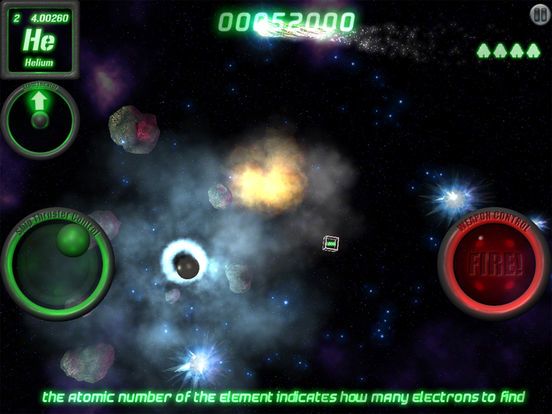You can trust VideoGamer. Our team of gaming experts spend hours testing and reviewing the latest games, to ensure you're reading the most comprehensive guide possible. Rest assured, all imagery and advice is unique and original. Check out how we test and review games here
After a quick glance at Nucleus, it immediately becomes apparent that it combines a great deal of the PlayStation Network’s most publicised titles, flOw and Blast Factor.
The game certainly has more in common with the latter, as it is a frantic shmup set in virus-riddled areas that make up its various levels. Each of these biological playing fields is no bigger than a few screens in size, meaning Nucleus demands tight, accurate flying, insanely precise marksmanship and the concentration of an expert sniper.
What it borrows from flOw is the thick liquid that fills the worlds your tiny craft inhabits. The sense of moving your jellyfish-shaped vehicle through the viscous gel is wonderfully realised, but the impact on the agility of your craft can sometimes be infuriating as the learning curve’s gradient increases.
This is a far more intricate game than Blast Factor, and has a number of controls and weapons available that bring a depth to the title lacking in most shmups. However, with their punishing difficulty levels and riotous pace, most of the greatest shooters are intentionally founded on a very shallow concept. Their depth comes not from complexity, but from absolute mastery of the basic techniques needed to succeed when the odds are stacked hugely against you. Innovation cannot be disregarded though, and Nucleus certainly appears to be a very promising shooter that may well prove the traditional shmup dynamic is not set in stone.
Your small ship, or ‘remote unit’, is controlled with the left stick, while the right stick directs your main weapon, aping the basic controls of Geometry Wars. At the core of the gameplay mechanic are the drifting cells that fill each level. The sticky globes can be nudged together to form defensive shields, or walls to trap enemies, and can be directed more accurately with a traction beam.
The most basic enemies are the simple bacteria that swarm in groups, ruthlessly pursuing you. They are often formed by the spores released by larger enemies, such as the nuclei that provide the game with its boss battles. The spores consume your cells, destroying your defences and turning them into yet more bacteria.
Upon destruction the bacteria, and the more violent viruses, release proteins into the space around them. Collecting enough of these proteins rewards you with a homing smart bomb that destroys both your enemies and your precious cells.
Nucleus is clearly a fairly complicated shmup, and juggling the various dynamics of the game can be trying at times. Building defences while dodging enemy fire, targeting rivals, weaving through closing gaps and gathering the spores is overwhelming to say the least, but when everything clicks it can be immeasurably satisfying.
Of course, as the genre demands, Nucleus is a very tough game, and though this will be off-putting to some, it provides exactly what a good shmup should – namely a task so trying that at first it seems impossible, that eventually reveals itself as within the realms of your ability.
The graphics, whilst undeniably stylish and unique, do little to distinguish enemies from the background. In many cases the foes that dart around you are almost invisible in front of the swirling surface beneath you, though after a short play it seems you can develop a superhuman sense of the whereabouts of your opponents.
Player skill is the only device that can truly reveal Nucleus’ worth, so extended play is needed to prove if the complicated structure and camouflaged enemies are inspirational gameplay elements or infuriating faults. Regardless, at this stage it looks like the latest PlayStation Network shooter has the potential to be one of the system’s must-have titles, and may even attract the adulation currently bestowed upon the mighty Geometry Wars.
Nucleus
- Platform(s): iOS, PlayStation 3
- Genre(s): Action, Arcade, Casual, Puzzle, Shooter

/https://oimg.videogamer.com/images/651f/nucleus_1.jpg)






